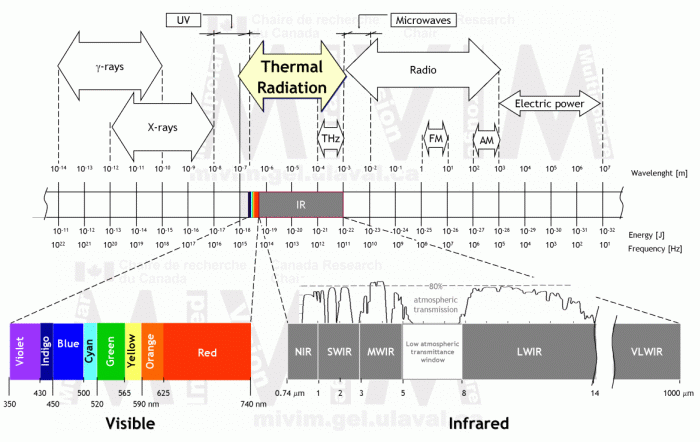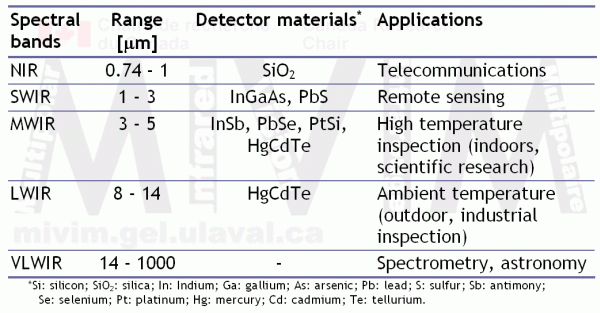


Figure 1 depicts the entire electromagnetic spectrum highlighting the infrared part located between the visible and the radio waves. The IR spectrum can be subdivided in 5 regions, although this definition is somehow arbitrary and it differs from one author to another. The subdivision proposed here is based on a combination of the atmospheric transmittance windows, i.e. the wavelengths regions in which infrared radiation is better transmitted through the atmosphere, the detector materials used to build the infrared sensors and the main applications (see Table 1). In this way, the Near Infrared (NIR) band is mostly used in fiber optic telecommunication systems since silica (SiO2) provides a low attenuation losses medium for the infrared, whilst the Short Wave Infrared (SWIR) band allows to work on long-distance telecommunications (remote sensing) using a combinations of detector materials. The Medium Wavelength Infrared (MWIR) and the Long Wavelength Infrared (LWIR) bands find applications in Infrared Thermography for military or civil applications, e.g. target signature identification, surveillance, NonDestructive Evaluation, etc. The Very Long Wavelength Infrared (VLIR) band is used in spectroscopy and astronomy.


The MWIR band is preferred when inspecting high temperature objects and the LWIR band when working with near room temperature objects. Other important criteria for band selection are [MALD01]: the operating distance, indoor-outdoor operation, temperature and emissivity of the bodies of interest. For instance, long wavelengths (LWIR) are preferred for outdoor operation since they are less affected by radiation from the Sun. LWIR cameras are typically uncooled systems using a microbolometer Focal Plane Arrays commonly used in industrial IR applications, although cooled LWIR cameras using Mercury Cadmium Tellurium (MCT) detectors exists as well. On the contrary, the majority of the MWIR cameras require cooling, using either liquid nitrogen or a Stirling cycle cooler. Cooling to approximately -196oC (77 K), offer excellent thermal resolution, but it might restrict the span of applications to controlled environments.
Last update: Friday, November 30, 2007
cic